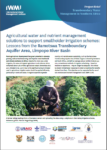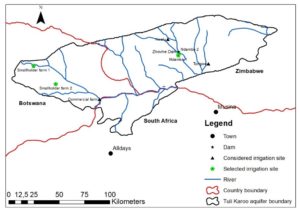Cooperative development and management of shared waters is widely recognized for its role in enhancing water security and increasing resilience. Protocols under the United Nations and the
Southern African Development Community (SADC) call for cooperation on transboundary waters. Also, Target 6.5 under Goal 6 of the United Nations Sustainable Development Goals (SDGs) specifically highlights the importance of transboundary cooperation for ensuring availability and sustainable management of water and sanitation for all (IAEG-SDGs 2016).
Guided by these frameworks, plans are articulated in transboundary contexts based on joint assessments
of shared resources and negotiated strategic action plans that outline actions to take forward. The vast
majority of transboundary strategic action plans in the world have been developed for international
surface waters (i.e., lakes, rivers, coastal areas), with less than ten focusing on transboundary
groundwater bodies. The Joint Strategic Action Plan (JSAP) for the Ramotswa aquifer is the first
strategic action plan developed for a transboundary aquifer in SADC.








